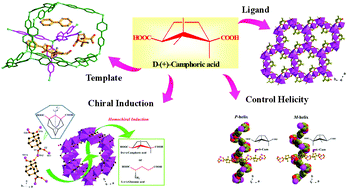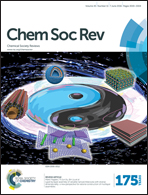Chiral chemistry of metal–camphorate frameworks
Abstract
This critical review presents the various synthetic approaches and chiral chemistry of metal–camphorate frameworks (MCamFs), which are homochiral metal–organic frameworks (MOFs) constructed from a camphorate ligand. The interest in this unique subset of homochiral MOFs is derived from the many interesting chiral features for both materials and life sciences, such as asymmetrical synthesis or crystallization, homochiral structural design, chiral induction, absolute helical control and ligand handedness. Additionally, we discuss the potential applications of homochiral MCamFs. This review will be of interest to researchers attempting to design other homochiral MOFs and those engaged in the extension of MOFs for applications such as chiral recognition, enantiomer separation, asymmetric catalysis, nonlinear sensors and devices.


 Please wait while we load your content...
Please wait while we load your content...